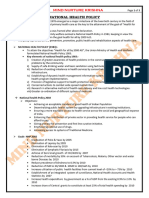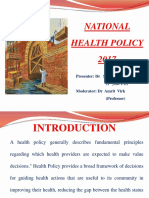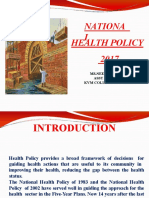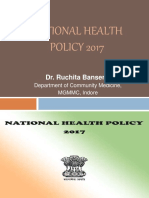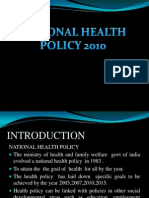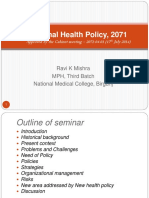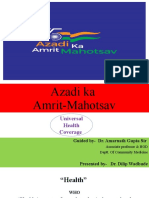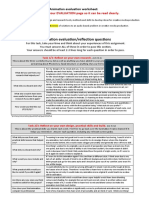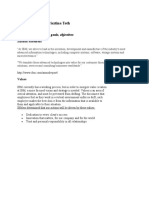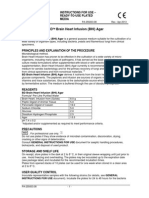0% found this document useful (0 votes)
13 views110 pagesCM 17 PDF
The document outlines the National Health Policy (NHP) of India, particularly the 2017 version, which aims to achieve universal health coverage and improve health outcomes through various specific objectives and policy principles. It highlights the need for increased public health expenditure, preventive health measures, and the integration of health services, while also addressing issues such as gender-based violence and antimicrobial resistance. Additionally, it discusses the evolution of health planning in India, emphasizing the role of NITI Aayog in current health planning efforts.
Uploaded by
Mrinmoy BorahCopyright
© © All Rights Reserved
We take content rights seriously. If you suspect this is your content, claim it here.
Available Formats
Download as PDF, TXT or read online on Scribd
0% found this document useful (0 votes)
13 views110 pagesCM 17 PDF
The document outlines the National Health Policy (NHP) of India, particularly the 2017 version, which aims to achieve universal health coverage and improve health outcomes through various specific objectives and policy principles. It highlights the need for increased public health expenditure, preventive health measures, and the integration of health services, while also addressing issues such as gender-based violence and antimicrobial resistance. Additionally, it discusses the evolution of health planning in India, emphasizing the role of NITI Aayog in current health planning efforts.
Uploaded by
Mrinmoy BorahCopyright
© © All Rights Reserved
We take content rights seriously. If you suspect this is your content, claim it here.
Available Formats
Download as PDF, TXT or read online on Scribd
/ 110








